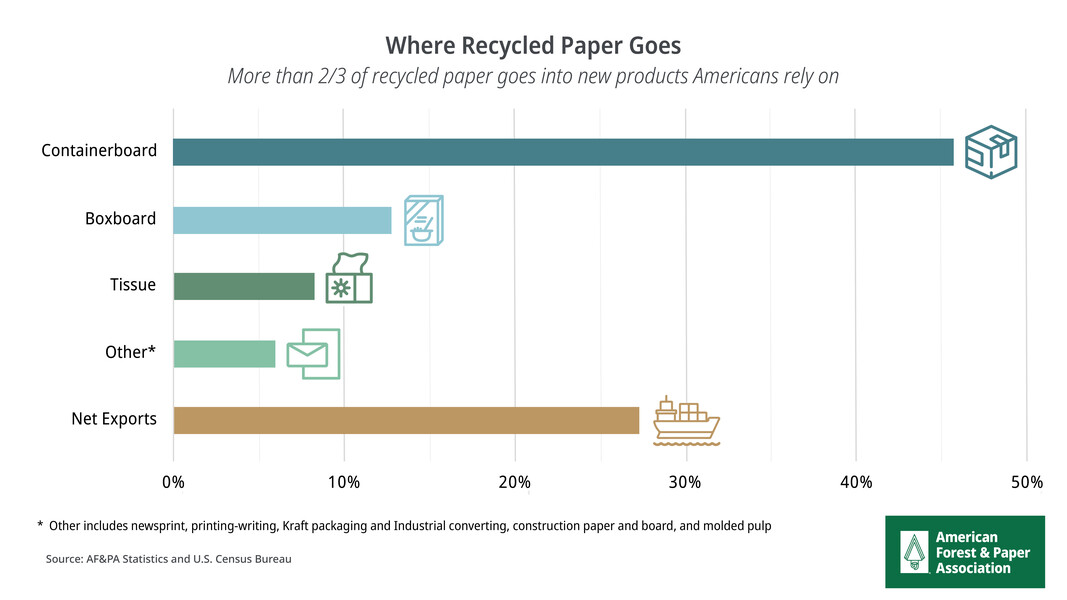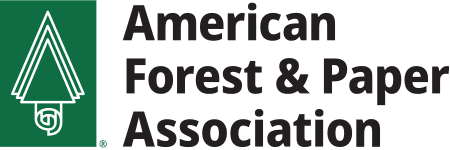Does Paper Actually Get Recycled? The Industry Answers
Question: You put your recycling in the bin and drop it at the curb. Then what happens? Does it actually get recycled?
Answer: Yes! Today, more than 2/3 of all paper recycled in the U.S. is turned into new products Americans rely on at mills nationwide.
Paper Recycling Works, and it Works Every Day
In 2024 alone, we recycled around 46 million tons of paper in the U.S. That’s 125,000 tons every day being turned into things like cardboard boxes, paper packaging and toilet paper. That translates to a paper recycling rate of 60-64%.
Nearly half of recycled paper went into making containerboard last year. That's the material used to make cardboard boxes.
Recycled paper is also used to make boxes for dry foods like cereal or pasta, tissue products like toilet paper and paper towels, as well as newspapers.
About 80% of U.S. paper mills use some recycled paper to make new and innovative products! Recycled paper is also exported. It's used in paper mills around the world to manufacture new products.

How are Paper and Cardboard Recycled?
Here's how the process works:
After your local recycling hauler picks up your recycling, it’s taken to a materials recovery facility (MRF) where it’s sorted into like things.
Workers remove items that shouldn’t be there, also called contaminants. That includes things like plastic bags, holiday lights, diapers and even bowling balls.
Paper is often separated first and sorted into groups for cardboard, mixed paper, office paper, among others. Then, the paper is baled and shipped to a paper mill where it’s turned into new paper products.
What Can You Do?
What can you do to make sure you’re recycling properly? Check your local community’s website to understand what’s accepted in your area. This helps ensure you avoid wishcycling.
Wishcycling is when you put something in your recycling bin hoping it will be recycled. Tossing something in your recycling bin because you think it can be recycled leads to contamination.
Putting non-recyclables in the recycling bin also clogs up the machines and can possibly injure the operations crew. That includes things like:
- Plastic bags and films
- Wire hangers
- Holiday lights
- Garden hoses
When you recycle correctly, you’re helping us advance a more sustainable future.
And when it comes to paper items: keep them dry and clean, then put them in the recycling bin.
